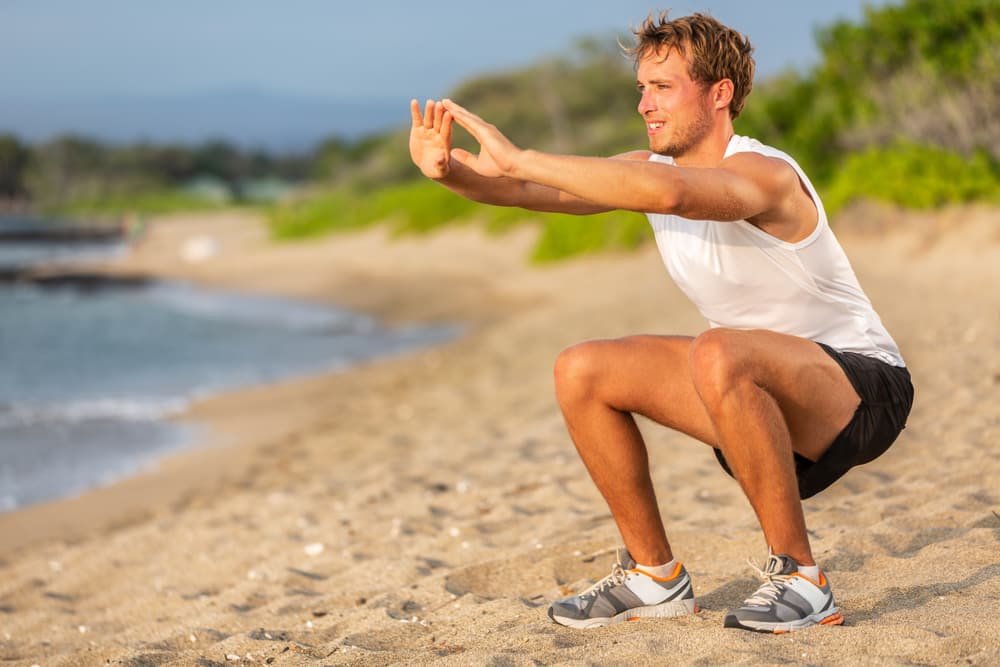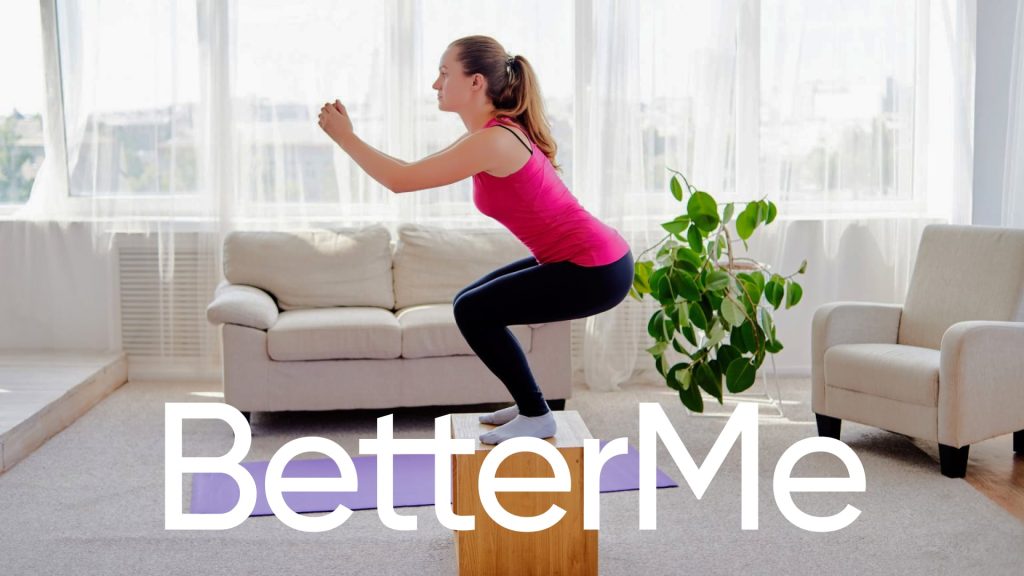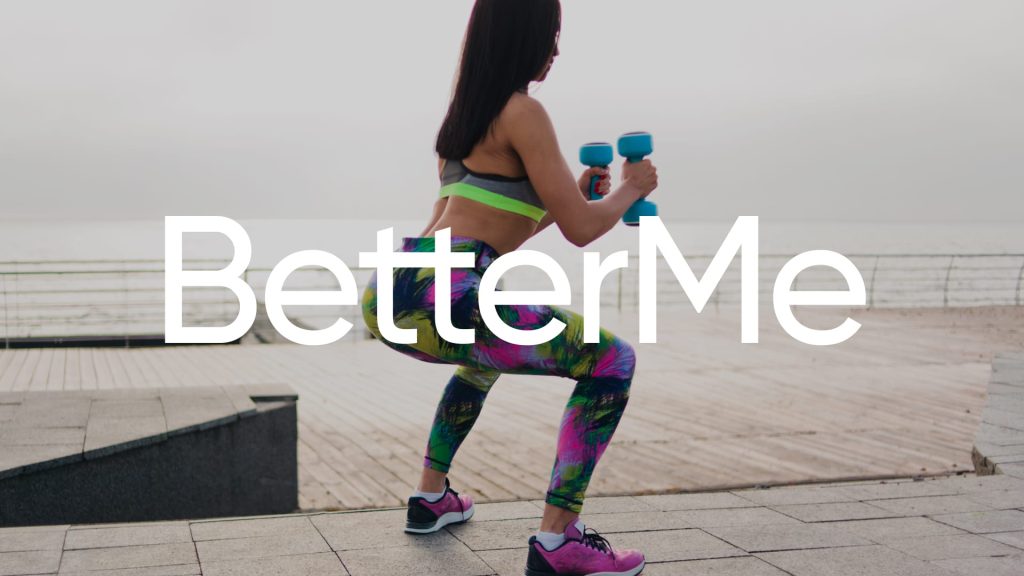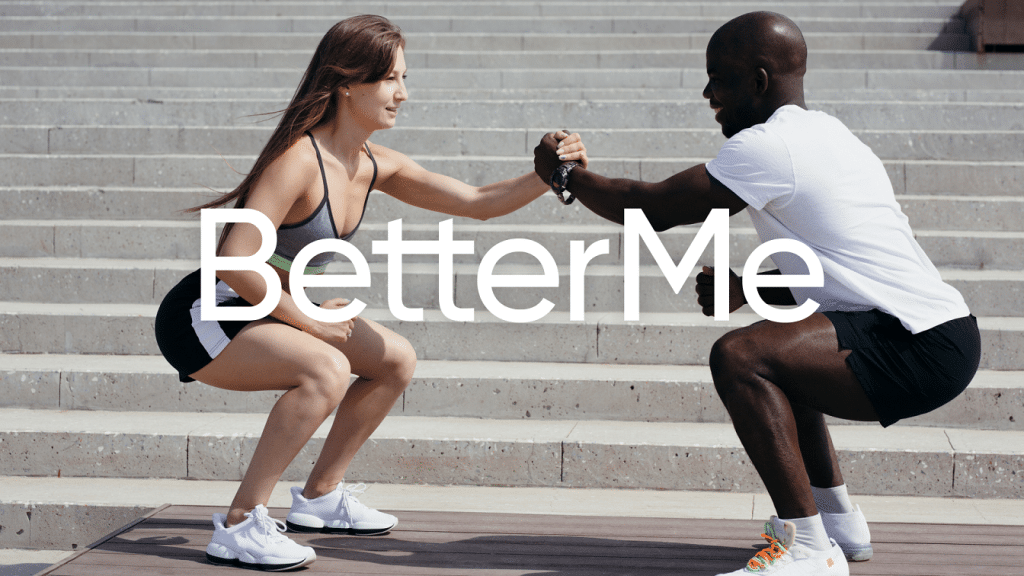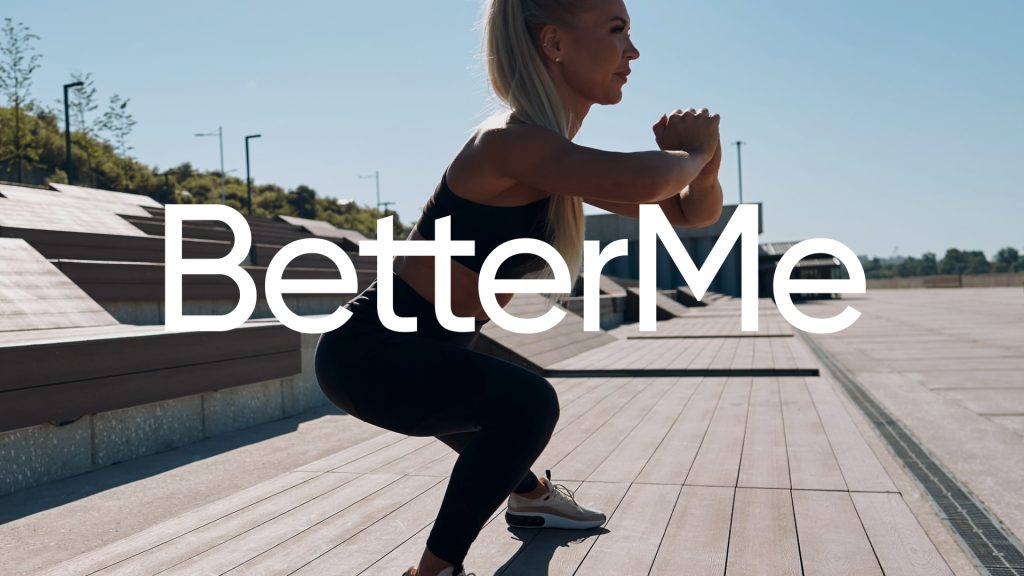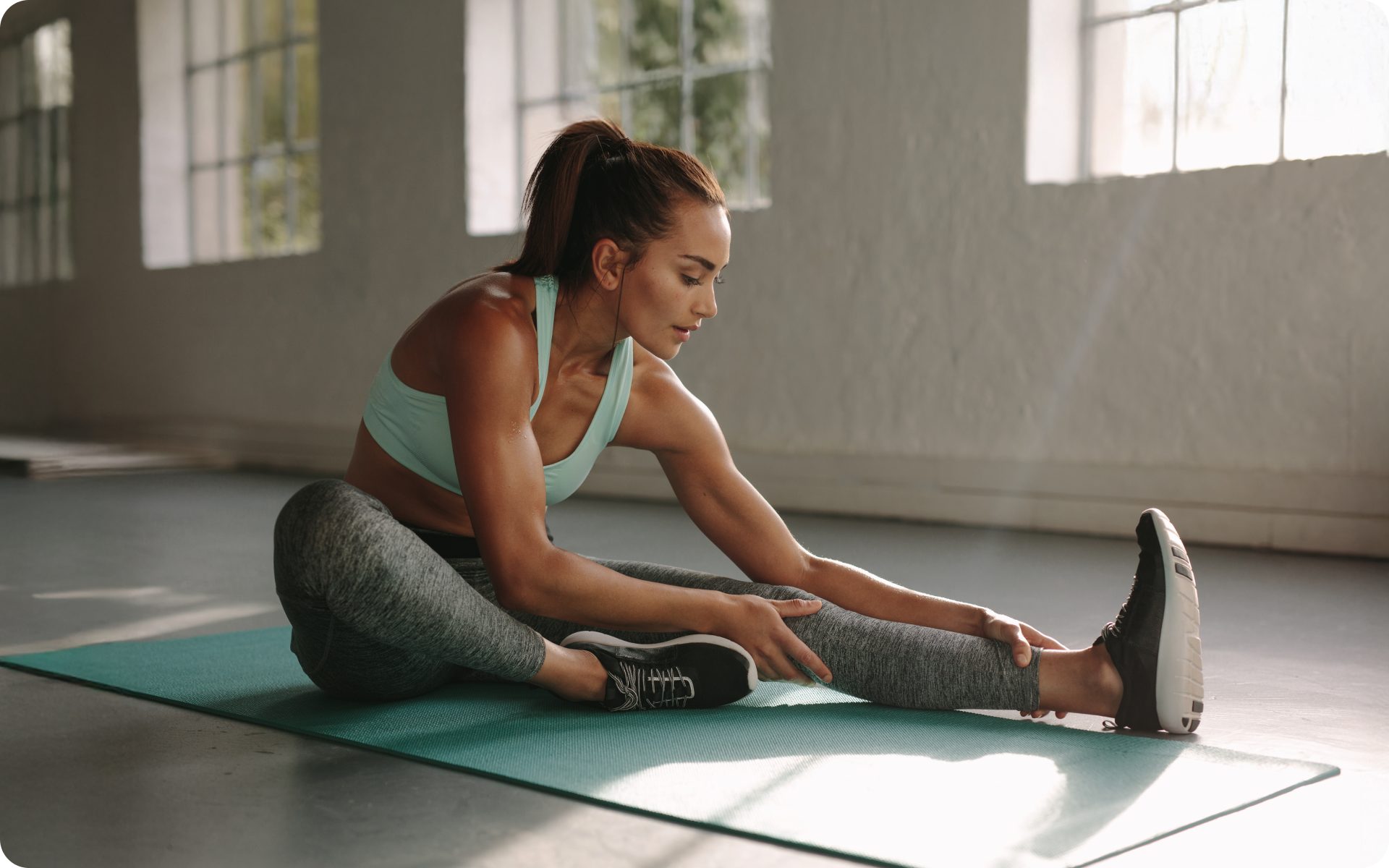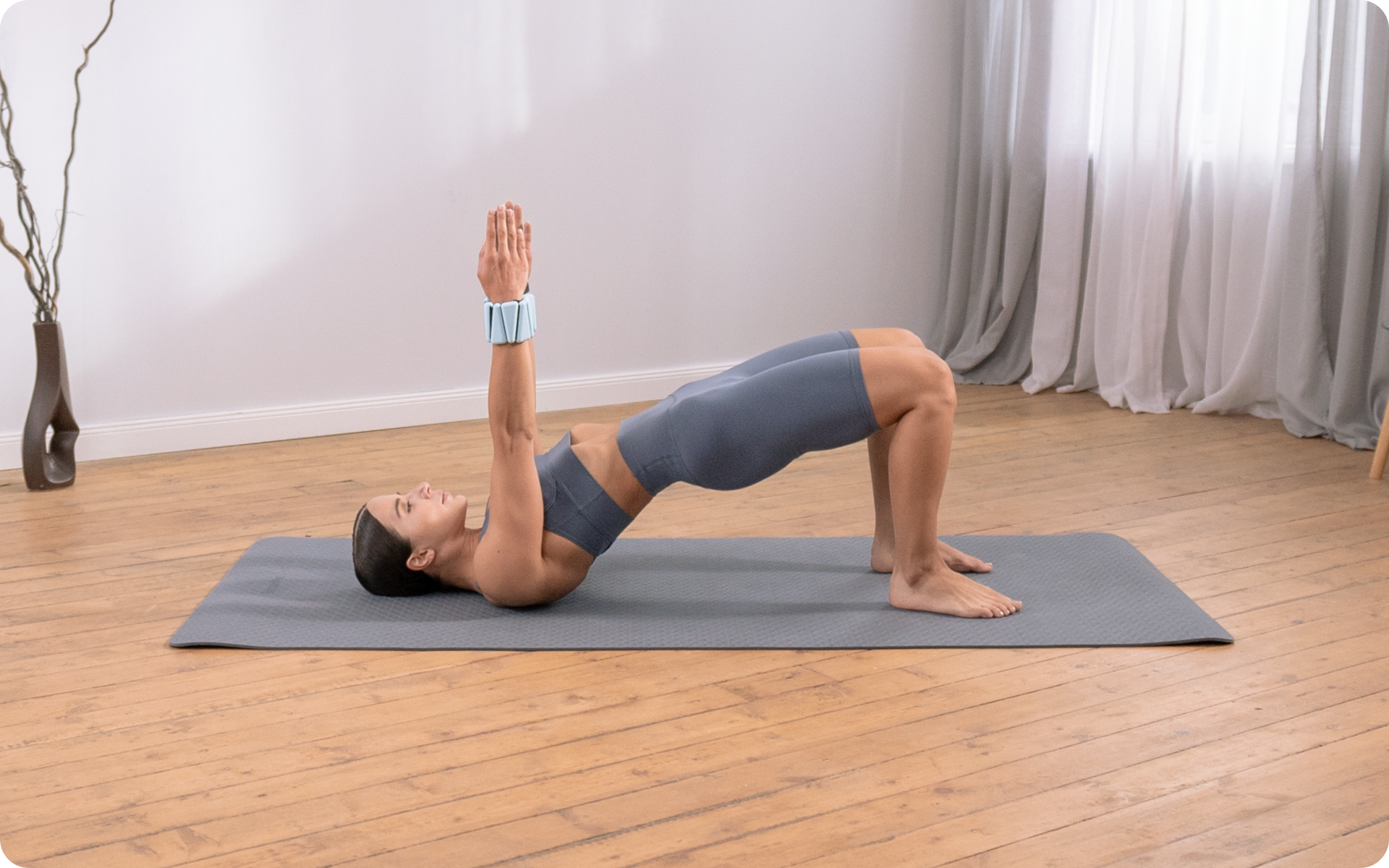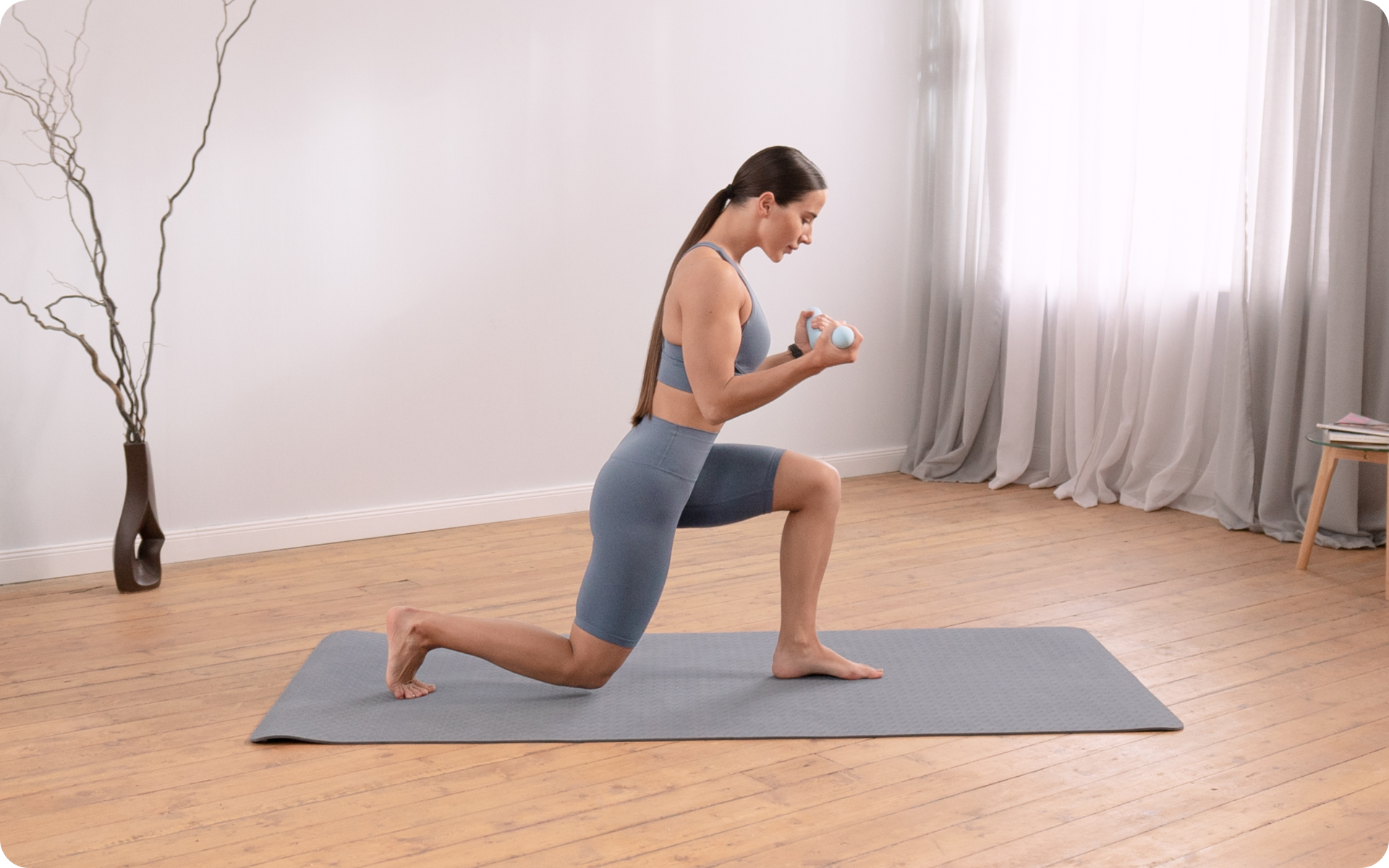Should You Keep Busting Squats Out?
A squat is a basic exercise that you can do without any special equipment. The workout targets your glutes, quadriceps and hamstrings, as well as your whole body. Since it targets many of the major muscles in your body, it’s a super workout for burning lots of calories.
So, how many calories does a squat burn?
According to the Compendium of Physical Activities, a resistance training squat burns 5 kilocalories/ kilogram/ hour. But that depends on multiple factors. For instance, you won’t burn too many calories from a light squat workout while doing everyday activities like lifting boxes. On the other hand, you can burn far more calories from a heavy weight training barbell squat.
This guide explains how such variations influence the calories you burn.
How Many Calories Does a Squat Burn?
Squats are among the best workouts that burn the most calories.
That’s because lower body exercises use more energy than upper body exercises like bicep curls. In fact, leg extensions and half squats have some of the highest energy requirements of 8 kilocalories/ minute and 11 kilocalories/ minute, respectively (a kilocalorie is the same as a Calorie) (6). That’s far higher than the energy use of lat pull downs (4 kcal/ min) and bicep curls (3 kcal/ min) (5).
Despite squat’s ranking among the exercises that burn the most calories, the specific amount of calories varies based on various factors.
Read More: Squats vs Lunges: Which One of These Time-Honored Exercises is More Effective?
The Calories You Burn Depends on Your Squat MET
The specific calories you burn in your squat will vary based on the squat metabolic equivalent.
A metabolic equivalent (MET) is a unit used to describe the energy expenditure of any activity you perform.
The specific MET number is derived from dividing the rate of energy you expend during an activity by the rate of energy you expend at rest. That means, 1 MET is your energy expenditure while resting, and 5 MET means the activity expends 5 times the energy used while resting.
1 MET is conventionally 3.5 milliliters of oxygen uptake per kilogram of body weight per minute (1). This reflects the intensity of the workout, which relates to the amount of calories you burn.
MET can also be expressed in terms of the duration of your workout.
For example, if you perform a 3 MET workout for 40 minutes, you would have 3 x 40 = 120 MET-minutes or 2 MET-hours of physical activity. That also means that a 6 MET workout performed for 20 minutes would also be a 120 MET-minutes physical activity (6 x 20).
As you can see, you can get the same amount of calorie burn either from a short, high energy expenditure workout or from a longer, lower energy expenditure workout.
Your Calorie Burn is Influenced by Body Weight
One person performing a moderate intensity workout may burn fewer calories than another person performing the same exercise.
That’s because of the relationship between your body weight and the workout MET.
1 MET is expressed as 1 kcal/kg/hr (2). Therefore, having more body weight means your total calorie expenditure will be higher, since MET shows the calorie use per each kilogram of body weight.
According to the Compendium of Physical Activities compiled by Arizona State University and National Cancer Institute, a resistance training squat has 5 METs (4). From that, we can work out the expected calorie burn for different body weights; for this specific workout:
- a 60 kg person will burn 60 x 5 METs = 300 calories/ hour
- a 70 kg person will burn 70 x 5 METs = 350 calories/ hour
- an 80 kg person will burn 80 x 5 METs = 400 calories/ hour
- a 90 kg person will burn 90 x 5 METs = 450 calories/ hour
- a 100 kg person will burn 100 x 5 METs = 500 calories/ hour
In contrast, if the same 70 kg person simply sat without being active, he/she would burn 70 x 1 MET = 70 calories an hour.
“So, if I weigh 300 pounds how many calories does a squat burn?”
A 136 kg (300 pound) person will burn 136 x 5 METs = 680 calories/ hour.
There’s your answer to, “How many calories does a 300 pound squat burn?”
If you’ve mustered up the courage to crush your weight loss goal, let Betterme take the sting out of this demanding process. Our app will help you restructure your habits, remold your life and crank up your fitness results!
Calorie Burn Influenced By Squat Intensity And Duration
You’re probably wondering how many calories you can burn doing 20, 50, 100, 500, or 1,000 squats.
Well, it’s not about the number of squats, but the intensity and duration of squats.
So, how many calories does a squat burn at different intensities and durations?
To figure that out, you should know the three different intensities of workouts (1):
- Low Activity
This is activity above the baseline resting state, but fewer than 150 minutes (2 hours and 30 minutes) of moderate-intensity exercises per week. It can also be 75 minutes (1 hour and 15 minutes) of vigorous-intensity exercises.
- Medium Activity
This is 150 to 300 (5 hours) minutes of moderate-intensity exercises per week. Alternatively, it may be 75 to 150 minutes of vigorous-intensity exercises per week. This is approximately equal to 500 to 1,000 MET-minutes per week.
- High Activity
This is more than the 300 minutes of moderate-intensity exercises per week.
Your Calorie Burn Is Affected By Other Factors
A range of other physical and external factors will influence your actual calorie burn.
For instance, the resting metabolic rate of every person differs slightly. You may have the same weight as someone else, but you naturally burn fewer or more calories (7). That means your workout metabolic rate will also differ from others.
Differences in calorie burn can be caused by factors such as:
- Body fat: Muscles tend to burn more calories than fat, so having more fat than muscles means less calories burnt.
- Age: Younger individuals tend to have a higher metabolic rate than older people, so the young burn more calories.
- Sex: Males may have higher metabolic rate than females, which means a higher calorie burn rate.
- Efficiency of movement: Performing a workout more efficiently means less wastage of your body’s energy resources, giving a lower calorie burn rate.
- Conditions like high altitude: This impacts the energy required during exercise, producing a higher metabolic rate at higher altitudes.
Besides, you might take time to rest during the workout, which can impact the amount of calories you burn.
Post-Workout Calorie Burn
An interesting thing that happens after your workout: your body continues burning calories.
It means you’ll likely burn more calories than what you expected from your squats. This is referred to as excess post-exercise oxygen consumption (EPOC) and it happens following an intense workout.
What causes this to happen?
The American Council on Exercise reveals that EPOC occurs as your body restores your muscles back to their normal resting state (3). That’s why it’s more likely to occur after an intense workout.
Therefore, you can increase the amount of post-workout burn by having a more intense workout.
Which may mean using weights during your squat workout, doing squat variations that are more challenging, or including other workouts along with your squats.
How Many Calories Does A Resting Squat Burn?
Since a squat can have multiple variations, you should know how many calories you can burn in different situations.
One variation is the resting squat.
The resting squat is basically squatting down with your legs completely bent. Keep your back straight and simply maintain that posture for several minutes.
The aim of such a posture is to stretch your limbs to maintain and improve flexibility and mobility (11). It helps in improving your physical capacity for sports, while giving relief to people who seat behind their desks all day long.
So, how many calories does a resting squat burn?
Although it isn’t as intense as a normal squat, the resting squat burns more calories than simply sitting on a chair.
Therefore, a resting squat will have an MET that’s between 1.3 METs of sitting quietly and 5.0 METs of resistance training squats, based on The Compendium of Physical Activities Tracking Guide (10).
That means a resting squat may be classified as a low-activity workout, which is beyond the resting baseline but less than a 150-minute moderate-intensity physical activity per week.
The posture may be an alternative to sitting on a chair. Sitting on a chair for long periods can cause a drop in your metabolic functions and calorie consumption. This may lead to insulin resistant and increased susceptibility to diabetes.
Moreover, sitting on a chair is less beneficial for your posture and spine, unlike resting squats.
Reasons why BetterMe is a safe bet: a wide range of calorie-blasting workouts, finger-licking recipes, 24/7 support, challenges that’ll keep you on your best game, and that just scratches the surface! Start using our app and watch the magic happen.
How Many Calories Does A Jump Squat Burn?
The jump squat is another squat variation, which is a low-resistance workout that doesn’t involve weights.
So, how many calories does a jump squat burn?
To figure out the calorie burn, you need to evaluate how intense the workout is.
The workout involves almost your whole core and lower body. It engages a wide range of major muscles, including your glutes, abs, hamstrings, and lower back.
It is also a bit challenging, since you must hinge at the hips to get your thighs parallel to the floor. Then you must explode off the floor, jumping as high as you can. When you get back down, you must squat and jump right up again.
You’ll be breathing hard after a few consecutive reps.
This aerobic workout may be more intense than jumping jacks, which somehow have a similar technique. That means the jump squat would be higher than 8 METs (2).
Are Squats Good For Weight Loss?
Based on the calorie burn of squats, you’re probably asking these questions:
- “Do squats burn belly fat?”
- “Will squats slim thighs?”
- “Should I keep busting them out?”
These questions can be answered by finding out whether squats are good for weight loss and your overall health.
The answer is that it depends on multiple factors. Simply burning calories through exercise may not be effective on its own to lose weight (12).
A study published in 2012 in the journal PLOS One, revealed that lean, active, and healthy hunter-gatherer populations actually burned the same amount of calories daily as the less active American or European, even after controlling for body size (8).
That means to lose weight you need to do more than just burn calories with squats.
The Answer: Diet And Squats
“How many calories does a squat burn?”
Well, that’s not the only question to ask. You also need to ask, “How many calories are in my food?”
Exercise is more effective in weight maintenance when used along with a proper diet plan. This is revealed in an October 2017 study published in the journal Obesity, which revealed that contestants who lost the most weight on the Biggest Loser weight loss reality show were those who ate the least (9).
Once you lose weight, exercise will help you in keeping it off effectively.
That was evident in the study on the Biggest Loser contestants. Those who maintained their weight loss after six years were getting 80 minutes of moderate exercise or 35 minutes of vigorous exercise daily.
Read More: Jump Squats Benefits: How Exploding Skyward Can Power Pack Your Muscles
Squats And Lifestyle Change
Unless you’re a professional athlete, exercise only makes a small portion of your daily calorie burn.
The majority of your energy expenditure comes from your daily activities (your lifestyle). In fact, exercise only makes up 10-30 percent of your total energy expenditure, according to Alexxai Kravitz, a neuroscientist and obesity researcher at the National Institutes of Health.
Therefore, the calories you burn from a squat may not have a major impact on your weight.
What this means is that you’ll likely have a far greater impact on your body weight by living a more active lifestyle.
You’ll have to change your daily routines into a more active pattern. For example:
- instead of driving to the local grocery store, why not cycle or walk
- get a standing desk instead of sitting on a chair
- wash your dishes by hand instead of using the dishwashing machine
- wash your clothes by hand instead of using the clothes washing machine
- mow the lawn instead of hiring someone to do it
- do some bit of general cleaning in the house
Do Squats For Your Health
As you can see, your question should be less about “How many calories does a squat burn?” and more about how squats can improve your health.
Since exercise alone cannot reduce your weight, you should exercise to improve your overall health.
When you focus on your health, you’ll find so many benefits, even without changing your diet.
For example, a Cochrane Review of the best available research revealed multiple health benefits, like reducing the risk of:
- blood pressure and triglycerides in your blood
- type 2 diabetes
- stroke
- heart attack
You can also improve your general physical fitness through exercise, which helps you handle day-to-day activities. Your body becomes more flexible so you don’t end up with accidental strains on your joints. You’ll also feel more energized due to the increased energy in your muscles long after the workout.
Your mind also benefits from exercise, just like your body.
Various studies have shown that exercise:
- lowers the risk of cognitive impairment from dementia and Alzheimer’s
- boosts scores on cognitive ability tests
Therefore, you should definitely keep busting out those squats.
Get your personalized
meal plan!
DISCLAIMER:
This article is intended for general informational purposes only and does not address individual circumstances. It is not a substitute for professional advice or help and should not be relied on to make decisions of any kind. Any action you take upon the information presented in this article is strictly at your own risk and responsibility!
SOURCES:
- 2008 Physical Activity Guidelines for Americans (2008, health.gov)
- 2011 Compendium of Physical Activities: A Second Update of Codes and MET Values (2011, pubmed.ncbi.nlm.nih.gov)
- 7 Things to Know About Excess Post-exercise Oxygen Consumption (EPOC) (2014, acefitness.org)
- Compendium of Physical Activities (2011, sites.google.com)
- Energy cost of isolated resistance exercises across low- to high-intensities (2017, ncbi.nlm.nih.gov)
- FAQS (n.d., nutrition.gov)
- How to Scientifically Calculate The Number of Calories You Burn Doing Any Physical Activity (2017, sciencealert.com)
- Hunter-Gatherer Energetics and Human Obesity (2012, journals.plos.org)
- Increased Physical Activity Associated with Less Weight Regain Six Years After “The Biggest Loser” Competition (2017, onlinelibrary.wiley.com)
- The Compendium of Physical Activities Tracking Guide (n.d., prevention.sph.sc.edu)
- The forgotten art of squatting is a revelation for bodies ruined by sitting (2017, qz.com)
- Why you shouldn’t exercise to lose weight, explained with 60+ studies (2017, vox.com)
